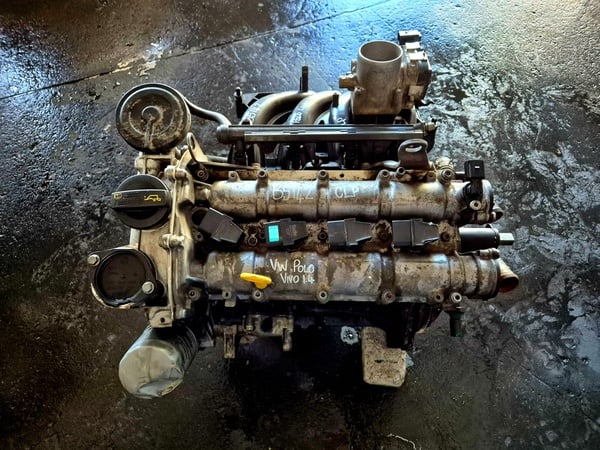Lower maintenance costs with a well-built clp engine.
Lower maintenance costs with a well-built clp engine.
Blog Article
How a Clp Engine Can Enhance Effectiveness in Different Industries
The arrival of CLP engines notes a considerable shift in functional efficiency throughout numerous sectors, driven by their capability to enhance fuel usage and reduce downtime. Industries such as manufacturing and logistics stand to get considerably from their robust layout and consistent power result, which guarantee to streamline operations and enhance performance. As organizations progressively prioritize sustainability along with performance, the role of CLP engines ends up being much more important. What stays to be seen is how these improvements will certainly shape the future landscape of industrial procedures and their influence on wider economic fads (clp engine).
Overview of CLP Engines
CLP engines, or Constant Fluid Propellant engines, represent a significant advancement in propulsion technology, specifically for room applications. These engines make use of a constant feed system that enables the sustained expulsion of propellant, leading to improved performance and performance compared to standard solid or hybrid propulsion systems. By preserving a consistent circulation of fluid propellant, CLP engines can achieve a lot more accurate drive control, which is crucial for steering spacecraft in various mission scenarios.
The design of CLP engines incorporates advanced products and innovative fuel administration systems. clp engine. This causes reduced weight and boosted dependability, essential aspects for long-duration area missions. Furthermore, the continuous operation minimizes the risk of combustion instability, a common obstacle in standard rocket engines.

Benefits in Manufacturing
The production of Constant Liquid Propellant (CLP) engines provides numerous significant advantages that enhance both efficiency and cost-effectiveness. One of the primary benefits is the structured production process, which decreases the intricacy connected with standard propulsion systems. By using liquid propellant, makers can achieve higher precision in engine efficiency, bring about enhanced power output and reduced waste.
Additionally, CLP engines facilitate a higher level of modularity, allowing for less complicated combination into numerous production lines. This versatility can significantly decrease preparations and improve overall operational flexibility. The usage of CLP modern technology additionally tends to decrease the need for extensive maintenance because of fewer relocating components, which converts right into decreased downtime and operational costs.

Applications in Logistics
Leveraging Continuous Liquid Propellant (CLP) engines in logistics provides considerable advantages in operational efficiency and integrity. These engines give a durable option for various transportation requirements, making it possible for the smooth motion look at more info of products across substantial ranges. The fundamental design of CLP engines permits consistent power output, which translates into smoother and much more foreseeable transportation timetables.
Among the key applications of CLP engines in logistics is in heavy-duty freight transportation, where they can drive both ground and aerial lorries. Their capacity to maintain high efficiency under differing lots conditions makes certain that shipment timelines are fulfilled, thereby improving client satisfaction. Furthermore, CLP engines can be integrated right into automated logistics systems, assisting in real-time tracking and enhancing path preparation.
Moreover, the sturdiness of CLP engines decreases maintenance downtime, allowing logistics firms to optimize their functional capabilities. This is specifically helpful in warehousing operations, where performance in taking care of and moving items is vital. As logistics continues to progress, the assimilation of CLP engines represents a forward-thinking approach that not only boosts efficiency but likewise supports the industry's expanding demands for dependability and speed.
Effect on Energy Effectiveness
How do Continuous Fluid Propellant (CLP) engines enhance power effectiveness in transport? CLP engines make use of a regular flow of fluid gas, enhancing combustion procedures and maintaining a steady thrust output. This style minimizes energy losses connected with conventional burning engines, where gas shipment can vary and bring about inefficiencies.
The continuous procedure of CLP engines permits for a more reliable thermal cycle, Home Page leading to higher certain impulse contrasted to standard engines. clp engine. This translates to lowered fuel usage for the exact same amount of work done, dramatically lowering functional expenses throughout various transportation fields, including aviation and maritime markets
Moreover, the ability of CLP engines to preserve optimal performance under differing tons problems lowers the requirement for regular acceleration and deceleration, better enhancing fuel efficiency. Improved energy effectiveness not just adds to cost financial savings but also results in decrease greenhouse gas discharges, straightening with international sustainability goals.
Future Trends and Innovations
Arising advancements in Constant Fluid Propellant (CLP) engine innovation pledge to change the landscape of transport performance and sustainability. As markets pivot toward greener options, CLP engines stand at the center, integrating cutting-edge materials and style approaches that enhance efficiency while lessening environmental influence.
One of one of the most promising trends is the fostering of hybrid systems that incorporate CLP engines with sustainable energy sources. This synergy can maximize fuel intake and lower emissions, lining up with worldwide sustainability goals. Developments in computational liquid characteristics (CFD) are helping with the layout of more aerodynamically efficient engines, leading to minimized drag and boosted gas effectiveness.
Additionally, the development of smart surveillance systems is established to improve operational efficiencies. These systems utilize information analytics and IoT technology to enhance engine efficiency in real-time, guaranteeing that the engines operate within their most reliable parameters.
As research remains to check out alternate propellant solutions-- such as biofuels and artificial gas-- the future of CLP engines looks promising. By taking advantage of these advancements, sectors can not just improve their effectiveness yet likewise contribute significantly to a cleaner, much more lasting future in transportation.
Final Thought
In final thought, CLP engines stand for a significant improvement in effectiveness across numerous sectors. The integration of sophisticated products and less relocating parts decreases upkeep needs, while alignment with sustainability objectives placements CLP engines as a critical innovation for the future.
Report this page